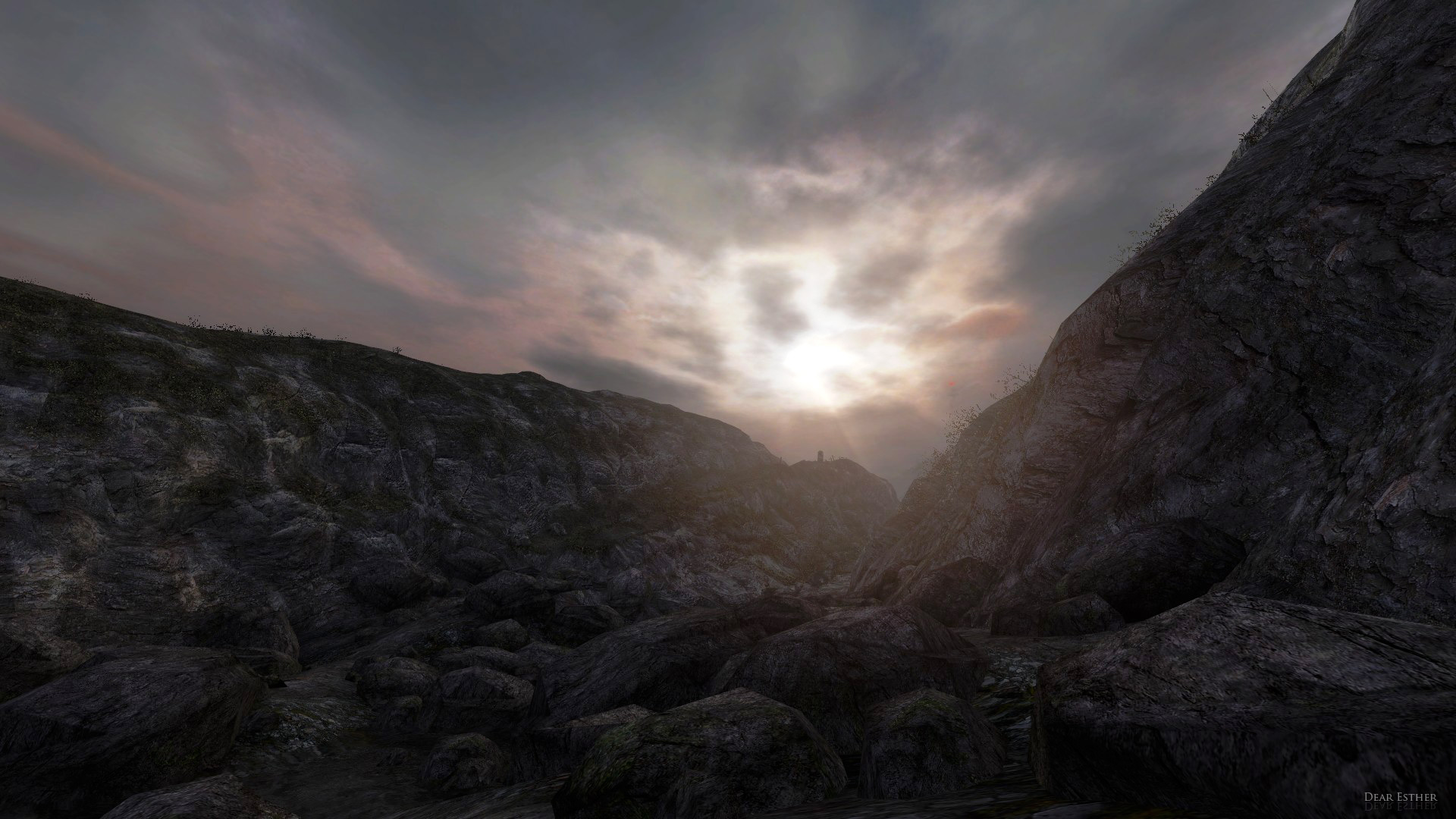

“That first night was just kind of sitting there watching the numbers and going, ‘Okay, this isn’t what we were expecting to happen at all!’” They sold enough copies to pay off the investment within six hours. “But even then we thought, it’s so experimental, it’s probably not gonna do very much.” “We still expected we would hopefully shift a few thousand copies.” Before release they had some reasons to be optimistic, with press coverage and a notice from Valve that they would be put on the front page of Steam.

“Really, the aspirations were still really pretty modest,” Pinchbeck says. They started looking into investments that would allow them to eventually release Dear Esther commercially, by paying for things like the Source engine and hiring musicians to make Curry’s soundtrack really shine, and were eventually supported by Indie Fund. “We were sitting there going, this feels really weird that this is so good and no one had really been paid for the mod,” Pinchbeck says. “Obviously, Mirror’s Edge is beautiful and we’re not going to turn away when a Mirror’s Edge artist goes, ‘Can I reskin your work?’” Pinchbeck says.Īfter a year or so, seeing the quality of the art Briscoe was producing, the team started to think about exactly how far they could go with it.

A little thing that he wanted to do in his spare time.” He asked if Pinchbeck and the others would be interested in him redoing the art for Dear Esther, which to that point had been mostly reusing Half Life assets. “He had just come off Mirror’s Edge and was looking for a downtime project. “I thought we’d probably get a couple of hundred downloads and people would tell us what was wrong with it.
Dear esther art mod#
“Which they did!” But all of the feedback ended up being useful as Dear Esther grew from an unexpectedly popular mod to something bigger. “I thought we’d probably get a couple of hundred downloads and people would tell us what was wrong with it,” Pinchbeck says. Maybe the mod’s popularity ought not to have been a surprise in retrospect, but at the time it certainly was. “But you look back on it and you go, well, why did it work? Because it worked in those games that I loved already.” “People just seemed to really get it in a way that I wasn’t really expecting,” Pinchbeck says. Combining Pinchbeck’s writing with the work of student artist Josh Short and developer Adam Griffiths, music by Jessica Curry, and voice acting by Nigel Carrington, the release was widely praised by the modding community. “What if it was just that? Would that work? Would that be something that would be engaging?” There’s those moments of real stillness where it’s just you and the world, and they’re really, really, really powerful.” He wanted to know whether a game could be made entirely from these atmospheric moments. “A lot of the call to action feedback loop falls away and you’re just kind of left. His main inspiration was the “quiet moments” that he found throughout games, even in the first person shooters that he was studying. “That felt much more in the spirit of games as a medium anyway.” “I was like, ‘Well, we could just build ,’” he says. As part of that, he had been reading a lot of game studies, but had mixed feelings about sitting back and talking about what could, should, or ought to be done in games. “I was doing a PhD, weirdly, on first person shooters,” Pinchbeck says. But before it was on the front page of Steam and selling like hotcakes, it was a Half Life 2 mod cooked up by designer and writer Dan Pinchbeck and a group of friends. Influential first-person exploration game Dear Esther released commercially 10 years ago this month.


 0 kommentar(er)
0 kommentar(er)
